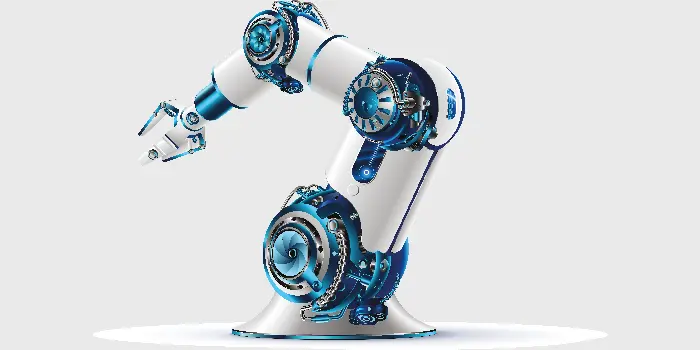AI Glossary
Robotics – Short Explanation
Robotics is the interdisciplinary field focused on designing, building, and operating machines – robots – that can perform tasks autonomously or semi-autonomously. While their physical forms and functions vary, robots typically integrate mechanical design, embedded software, and electrical systems to interact with the real world. From manufacturing and logistics to healthcare and home automation, robotics continues to transform industries by improving efficiency, safety, and precision.

Table of Contents
Robotics in the Real World
Robots started to impact businesses and individuals in a big way in the late ’90s and early 2000s. Primarily used in manufacturing, by 2005, close to 90% of robots were in use within automotive facilities. At that time, robots were relatively simple machines designed with a particular task in mind. That is changing, and robots today have evolved considerably from those simple machines. Now robots are used to explore the Earth and our nearest neighbor; they work with law enforcement and even assist in helping us get well.
There are many different types of robots, and they vary in shape and size. Generally, speaking robots are designed to perform a specific task, and their form is built around performing that task most efficiently. An example of this is a robotic arm used in an assembly line. This arm has only a single function, and extraneous additions only detract from its ability to perform that function.
Robots are used across a host of different industries in the real world. In manufacturing, they are used to help assemble the product, and this is where robots are most well known. However, in recent years robots have taken a more significant role within logistics facilities also with robots deployed in warehouses around the world. Robots are not only used in business though – they play a big role in healthcare and also “cleaning up” in the home!
Tip:
Robotic systems rely on accurate sensor data, visual recognition, and natural language processing to function effectively in dynamic environments.
LXT delivers high-quality multimodal training data – including annotated images, speech commands, and real-world interaction data – to support the development of smarter, safer, and more adaptable robotic systems.
Robotics in the World of AI
When discussing robots in the world of AI, it is essential to understand that currently, there are no robots capable of replicating the feats of Arnold in the Terminator. Autonomous robots are capable of operating without significant supervision, but even in this case they have a very clearly defined scope of responsibility. A great example of an autonomous robot is a robotic vacuum cleaner. Here the vacuum cleaner uses sensors to navigate a room or a home and will clean up dust and debris within the scope of its area.
